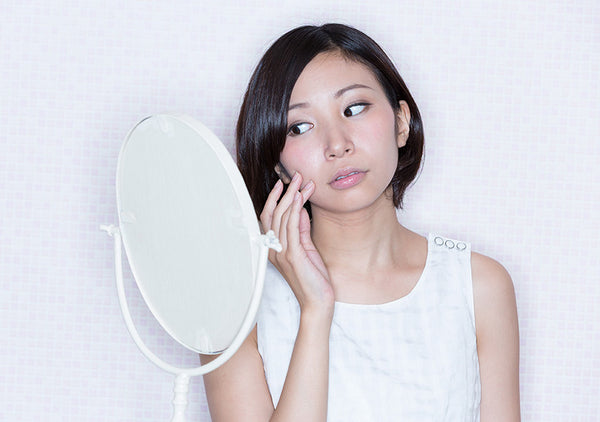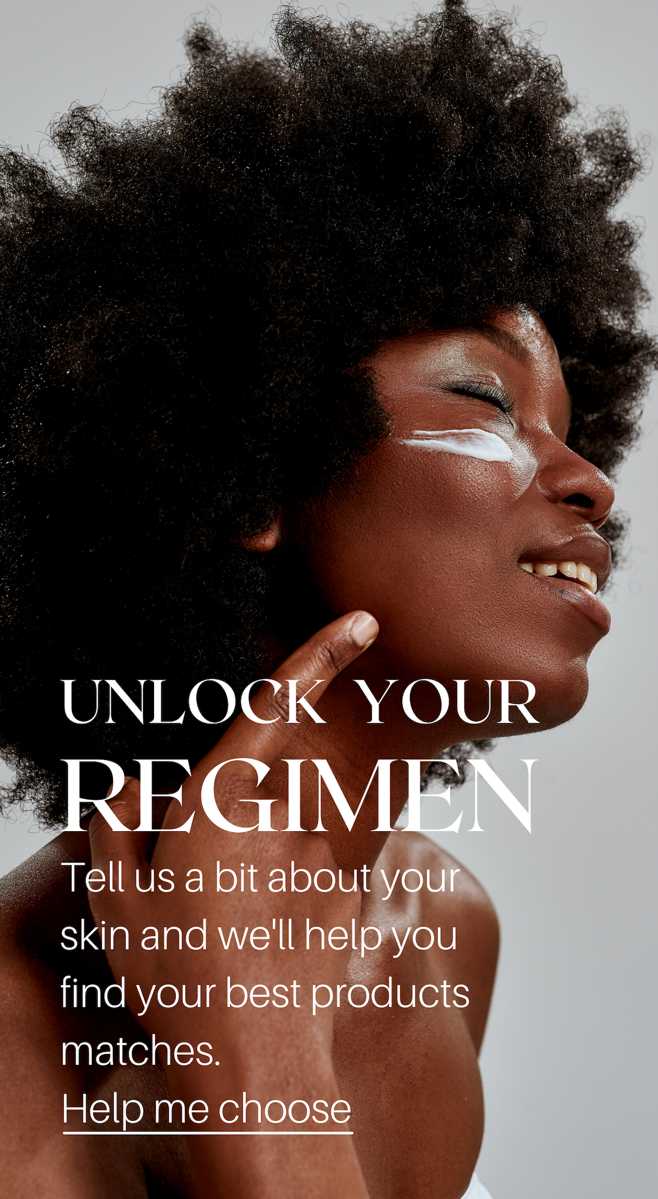How Much Do You Know About What Fuels Your Skin Discoloration Issues?

Can you spot the truth about the triggers?
SUN IS A MAJOR CONTRIBUTOR TO SKIN DISCOLORATION.
TRUE. Sun is a major culprit in pigment irregularities because UV radiation releases free radicals in the skin, which attack healthy cells. Melanin production is triggered in an attempt to protect the cells from damage. Too much exposure, too much melanin.
VIGOROUS SCRUBBING WITH COARSE PADS WILL HELP BREAK UP EXCESS PIGMENTATION.
FALSE. Hyperpigmentation is often the result of inflammation. Scrubbing can irritate and inflame skin triggering the synthesis of more pigment. Instead, use a gentle alpha hydroxyl acid like mandelic acid for micro-exfoliation that won’t irritate and further inflame skin. Mandelic acid has a larger molecule that makes it absorb more slowly into the skin, plus, it has the added benefit of being a natural skin lightener making it the ideal solution for targeting hyperpigmentation.
EATING LIVER CAN HELP REDUCE HYPERPIGMENTATION.
TRUE. But that’s nobody’s idea of delicious unless you can eat a truckload of liver. Deficiencies in B12 have been linked to an increase in melanin synthesis, anemia, and nervous system damage. B12 is only found in animal sources, particularly organs. Since a lot of other undesirable things are found in organs, better sources are meat, fish, shellfish, eggs and dairy products (raw is better than pasteurized). Vegans should look to fortified foods or supplements to ensure sufficient levels of B12.
AGE SPOTS ARE JUST PART OF GETTING OLDER.
FALSE. Age spots are actually not age spots at all. They are solar lentigines caused by exposure to the sun. They do increase as we get older, but that’s the result of a lifetime of accumulated sun damage, rather than age.
DARK SKIN DOESN’T REQUIRE SUNSCREEN.
FALSE. Skin of color does have more natural protection from the sun, but it’s not immune to sun damage. Dark skin is more prone to melanin flare-ups because there are more melanocytes in the skin to begin with so there’s more to react when inflammation occurs. To avoid triggering UV-induced hyperpigmentation (and other photodamage) sunscreen is a must in every skin tone.
LASERS ARE A GOOD WAY TO TREAT HYPERPIGMENTATION.
FALSE. Heat causes inflammation and inflammation triggers hyperpigmentation. Best to stick to light chemical peels, light exfoliation and lighteners like hydroquinone 2%, kojic acid, mandelic acid, niacinamide, and lactic acid.
HYPERPIGMENTATION CAN BE RELATED TO ILLNESS.
TRUE. Some underlying medical conditions including Addison’s disease, Cushing’s disease and hypothyroidism can be contributors to hyperpigmentation.
BIRTH CONTROL CAN TRIGGER MELASMA.
TRUE. Melasma, also known as “the mask of pregnancy” is hormone related. It often happens during pregnancy when the melanocyte stimulating hormones estrogen and progesterone surge. Because hormonal birth control mimics this elevated hormone environment in the body to prevent ovulation, it can trigger melasma just like pregnancy does.
ACNE CAN TRIGGER HYPERPIGMENTATION.
TRUE. Impactions—pimples, cysts, lesions—in the skin are a form of inflammation. That’s why pimples are often red and tender. The inflammation triggers a melanin response in skin, which can leave behind a dark mark after the pimple recedes. To avoid this, controlling breakouts and inflammation is job one. Benzoyl peroxide, mandelic acid, vitamin C, vitamin A, nicinamide, lactic acid, and aloe are all good ingredients for calming and controlling breakouts.


Comments